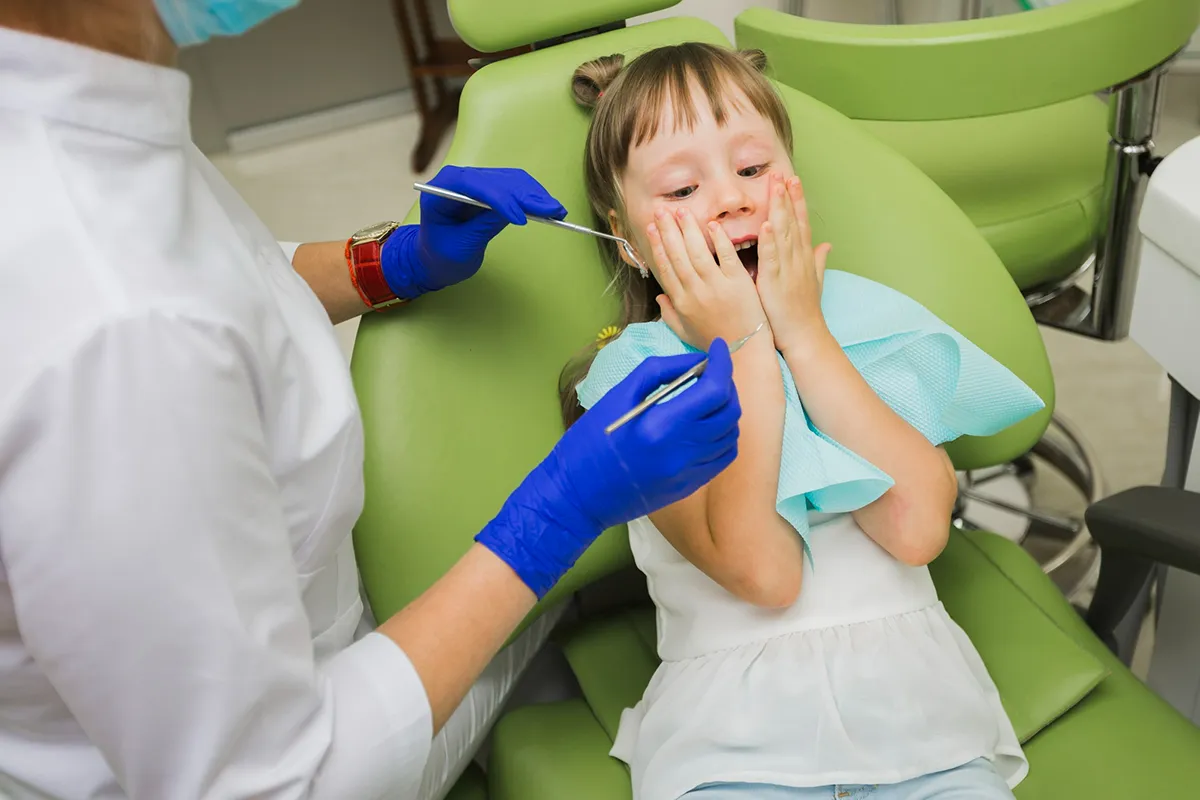What is Pediatric Pulp Therapy?
Despite modern advancements and an increased understanding of dental caries, many teeth still get lost prematurely. The primary objective of pulp therapy is to prevent tooth loss. It restores and maintains the integrity of the affected tooth and helps the root to develop normally. Children may need pediatric dental pulp therapy like adults, and there's no harm in receiving this treatment.
Pediatric pulp therapy has two major types, i.e., pulpotomy and pulpectomy. It's safe and done with utmost care to facilitate children who have damaged dental pulp. In any case, it aims to preserve the infected tooth to reduce the need for tooth extraction. Find out more about pulp therapy in pediatric dentistry and know what to expect from the treatment.
Pulp Therapy in Children

Children are fond of eating sugary items, and many biological reasons exist for this purpose. The unhealthy diet pattern develops dental caries or cavities in children and causes tooth decay. The bacteria in the mouth reaches the pulp and down the root, invading the dental pulp.
Pulp therapy has several other names, including pulpotomy, root canal, nerve treatment, and pulpectomy. Its primary goal is to save the tooth and restore its function. The dentist might recommend pulp therapy for your child if extreme tooth decay reaches the pulp. It causes the pulp to become infected, and the child might lose the tooth otherwise. The dentist saves the tooth with pulp therapy so it does not get lost.
Signs of Damaged Dental Pulp
You probably work hard to ensure your child develops the best oral health habits. However, sometimes children develop dental problems despite your best efforts and giving them a healthy diet. If your child is experiencing extreme tooth pain, a damaged dental pulp could be one of the reasons. You must know the signs of a damaged dental pulp so the dentist can save the child's tooth. The common symptoms of the damaged dental pulp include:
- Persistent toothache (dull or throbbing).
- Prolonged tooth pain and sensitivity.
- Face swelling.
- Fever.
- A tooth that hurts upon touching.
- Disturbed sleep because of pain.
If you find these symptoms, be ready to visit the dentist. Your child might be a potential candidate for pulp therapy.
Types of Pulp Therapy: Pulpotomy and Pulpectomy
Pulpotomy and pulpectomy are two common types of pulp therapy in children. The former is a less invasive procedure that eliminates the infected pulp within the tooth's crown. As a result, the root remains healthy and safe. After the removal of the infected pulp, an agent is placed in the tooth. It helps prevent bacterial growth and calms the nerve of the tooth. Afterward, a dental crown takes place to strengthen the tooth and prevent future fractures.
This procedure removes the pulp from all tooth parts, including the root and the crown. A biocompatible material fills the gap and serves the same purpose as the original pulp. The latter is less common for baby teeth but can still help save a highly damaged tooth.

Pediatric Pulp Therapy: How to Prepare Your Child?
- Teach your child about the procedure and be transparent with them.
- Tell them their pain can only go away if they proceed with the treatment.
- Give some form of reinforcement to your child and reduce their anxiety.
- State to them that the procedure will only take less than an hour and will not be hurting.
- Tell them that some bleeding is common and there is nothing to worry about.
Concluding Words
Pulp therapy is a safe procedure that helps to preserve your child's tooth if treated well on time. Doctors numb the area surrounding the affected tooth to ensure the child feels comfortable. If your child is experiencing damaged dental pulp symptoms, contact a pediatric dentist at your earliest convenience. Pulp therapy can even save a highly damaged tooth and can preserve your child's smile.
Contact your Stockton pediatric dentist, Dr. Sajjad Rizvi, at Happy Kids Dental for more information on Pediatric Pulp Therapy.
Resource:
What Are Pediatric Dental Pulp Complications?
This media/content or any other on this website does not prescribe, recommend, or prevent any treatment or procedure. Therefore, we highly recommend that you get the advice of a qualified dentist or other medical practitioners regarding your specific dental condition.
Subscribe To Our Newsletter
Get Updates And Learn From The Best


